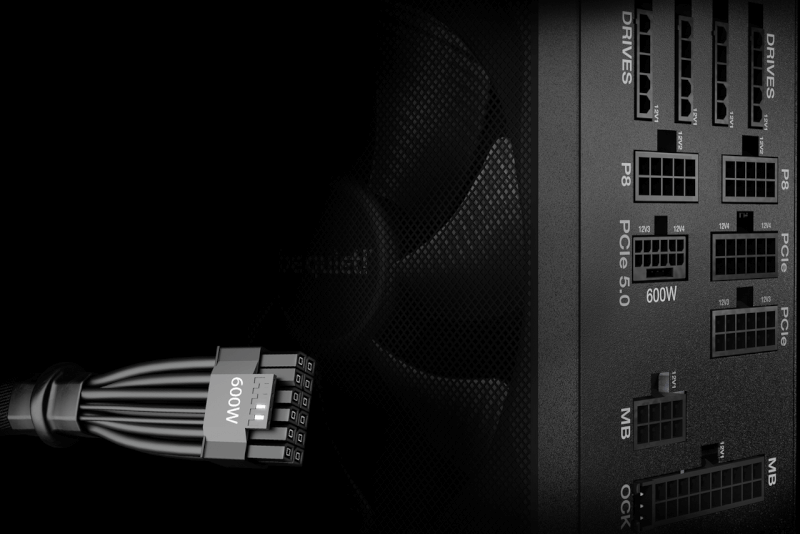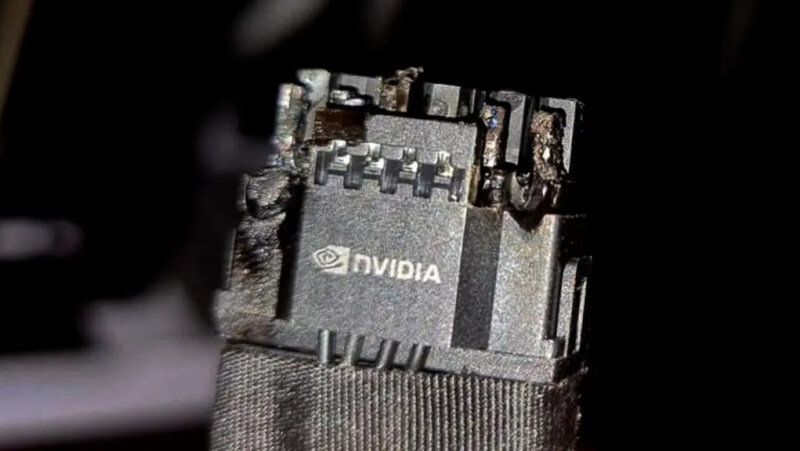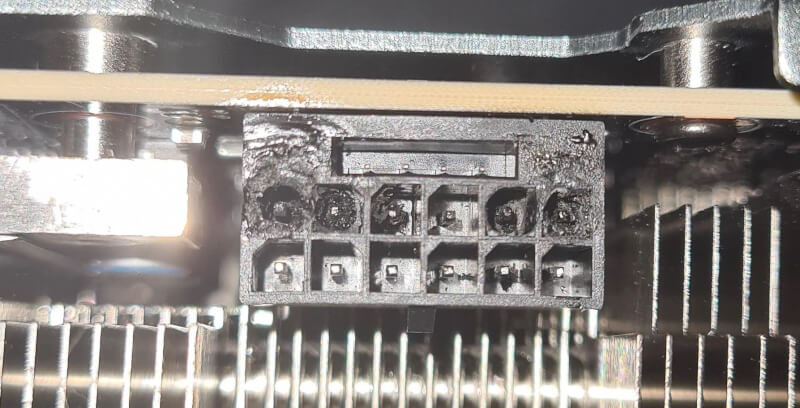What is 12VHPWR?

Why do we need a new connector?
As technology develops on the PC market, there are also increasing demands on the hardware we use. Things like graphics cards are getting more powerful and need more power to deliver the increasing performance demanded by high end users.
The new 12VHPWR has been created as a result of a combination of new PCIe and ATX standards. They have been made to follow the development that has taken place within PC hardware, and which we will see more of in the future. The standards have been developed so that different manufacturers work in a common direction, and as a consumer you can be sure that the hardware we buy can be used together.
When new things are added, however, it can be difficult to see what they entail and whether you should change hardware in order to be able to participate in the development.
PCIe 5.0
PCIe 5.0 is the standard used for the interface between a system and various expansion cards. A selection of different devices talk together in a system via PCIe. It can be things like M.2 storage solutions and graphics cards. In relation to the talk about 12VHPWR connectors, it is most relevant to stick to graphics cards.
In the new PCIe 5.0 standard, the data speed is increased from 16 to 32 gigatransfers per second. This is good news for people who want lightning-fast M.2 storage, as more data can be transferred. However, it can also be important in connection with things like graphics cards, as higher data rates can mean higher demands for power. It is especially the short peak loads that have become part of the PCIe 5.0 standard.
These High transient load scenarios were not defined in PCIe 4.0. In PCIe 5.0, not only the maximum load is defined, but also the short load peaks.
The maximum load is set to an average peak load of 600W in PCIe 5.0. However, for very short periods of less than 100 microseconds, the maximum load peak can be up to three times the maximum average.
So if you have a 600W graphics card, the peak load must be a maximum of 1800W, up to 100 microseconds.
Of course, these are all maximum numbers, and many graphics cards will be well below those requirements. There is currently a graphics card such as the RTX 4090 with a TDP of 450W, so there is still some room for improvement.
ATX 3.0
In order to satisfy, among other things, the new PCIe 5.0 requirements, there has also been an update to the ATX standard, which is now ATX 3.0. The ATX standard was developed by Intel, but is used across the PC hardware industry, on most consumer hardware.
In the new ATX 3.0 standard, there are requirements for the power supplies to ensure that they can meet the new upcoming requirements and needs, including PCIe 5.0.
The new update has come in recognition that hardware is becoming more power-demanding, especially in peak loads. In the previous standard, as with PCIe, no required specifications were defined for loads above the average load.
In practice, the vast majority of power supplies from good manufacturers have easily been able to cope with the requirements, and can still do so. With ATX 3.0, however, there are specific figures on what a power supply must be able to handle, and this is an advantage for the consumer, as it becomes easier to see through and possibly keep the producer up on.
So an ATX 3.0 certified power supply is a guarantee that it will be able to cope with the new PCIe 5.0 requirements, with peak loads of up to three times the average load for e.g. a graphics card.
The new 12VHPWR connector
The new 12VHPWR connector is a natural development in continuation of the above requirements and developments.
The new 12VHPWR connector is a requirement for all ATX 3.0 power supplies, of more than 450W. We have to go all the way back to 2013 to find the last cable update for ATX power supplies, where the PCIe 8 pin connector was introduced. It could supply connected devices with up to 150W.
This means that we are actually under a bit of pressure with new graphics cards, as three eight-pin PCIe connectors are required for the new cards. It is made easier to accommodate, with the new 12VHPWR plug.
It can deliver up to 600W, via a single cable. However, you have to be careful, because not all devices support up to 600W. Smaller power supplies than the 1000W model we are visiting can be rated in steps of either 150W, 300W or 450W.
At the same time, the 12VHPWR is also an active cable, in the sense that it has sense pins so that communication can take place between the power supply and connected devices. This means that, for example, a graphics card can read how much current the cable can deliver. So if you have one of the smaller units that might only deliver 300W, then a connected graphics card won't try to use more than what the power supply can deliver.
A 12VHPWR connector does not mean you have an ATX 3.0 certified power supply
However, you should be aware that you may well experience power supplies with a 12VHPWR plug that are not ATX 3.0.
Some manufacturers, such as BeQuiet or Seasonic, can supply 12VHPWR plugs for their older power supplies. They can do that because they already in practice meet the specifications that the 12VHPWR plug uses.
Does the 12VHPWR plug melt?
There has been a lot of debate and talk about whether the new 12VHPWR plugs are dangerous and melt. There have been quite a few reports in the hardware media, after the launch of the new 4000 series cards from Nvidia, about 12VHPWR connectors melting.
It is quite true that this has happened and there was concern that this was because the new smaller connector could not handle so much current being passed through it.

However, after extensive investigations, it has been shown that the problems stemmed from connectors that were not installed correctly.
The new 12VHPWR plugs are smaller, and therefore more current is passed through smaller contact surfaces than before. This means that a loose connection, e.g. due to an incorrectly fitted plug, can lead to excessive heat generation and consequently melted plugs.
Care must therefore be taken to mount the 12VHPWR plug securely and completely in place to avoid this. Here, many will argue that it is bad design that this problem can occur at all, and I partially agree with that.
A plug like this should be designed so that you could easily be sure that it was installed correctly. It is easier with the existing six or eight pin PCIe connectors, as they are somewhat larger.

The smaller size of the 12VHPWR connector means that the locking mechanism and the connector itself can be difficult to see during installation. PCI-SIG, which stands for the design and the PCIe standard, has also expressed that tweaks to the design can be discussed.
The conclusion is, however, that the design may not be quite optimal, but that you should not be afraid to use the new 12VHPWR connectors. You just have to pay attention to fitting the plug correctly, so that it sits completely at the bottom at both ends.
Should I change the power supply?
For most, you can wait. At the time of writing, the only thing on the consumer market that uses the new 12VHPWR connectors is Nvidia's latest 4000 series of graphics cards.
Even if you already have, or will soon buy, an Nvidia graphics card in the new 4000 series, there is no reason to run out and spend money on a new ATX 3.0 power supply. This is especially true if you already have a sufficiently large power supply from a good manufacturer.
As mentioned earlier, you can already get a 12VHPWR plug for older power supplies from some of the big manufacturers. That way you can get a 12VHPWR plug directly into your existing power supply.
For the graphics cards in the new Nvidia 4000 series, however, there is also always a 12VHPWR adapter included, so that you can use three ordinary eight-pin PCIe connectors.
If you still have to go out and buy a new power supply in connection with an upgrade, or perhaps a new system, then it could be an idea to look for an ATX 3.0 power supply.
Latest psu
-
23 Decpsu
-
06 Decpsu
Seasonic updates CORE ATX 3 series
-
25 Novpsu
Seasonic PRIME TX-1600 Noctua Edition announced
-
04 Novpsu
Seasonic Focus GX ATX (2024) 850W
-
08 Augpsu
Corsair changes PSU certification
-
07 Junpsu
BeQuiet shows Pure Power 12 at Computex
-
07 Maypsu
BeQuiet reduces the price of power supplies
-
05 Marpsu
Measure your PC's power consumption
Most read psu
Latest psu
-
23 Decpsu
Be quiet! Pure Power 12 650W
-
06 Decpsu
Seasonic updates CORE ATX 3 series
-
25 Novpsu
Seasonic PRIME TX-1600 Noctua Edition announced
-
04 Novpsu
Seasonic Focus GX ATX (2024) 850W
-
08 Augpsu
Corsair changes PSU certification
-
07 Junpsu
BeQuiet shows Pure Power 12 at Computex
-
07 Maypsu
BeQuiet reduces the price of power supplies
-
05 Marpsu
Measure your PC's power consumption






